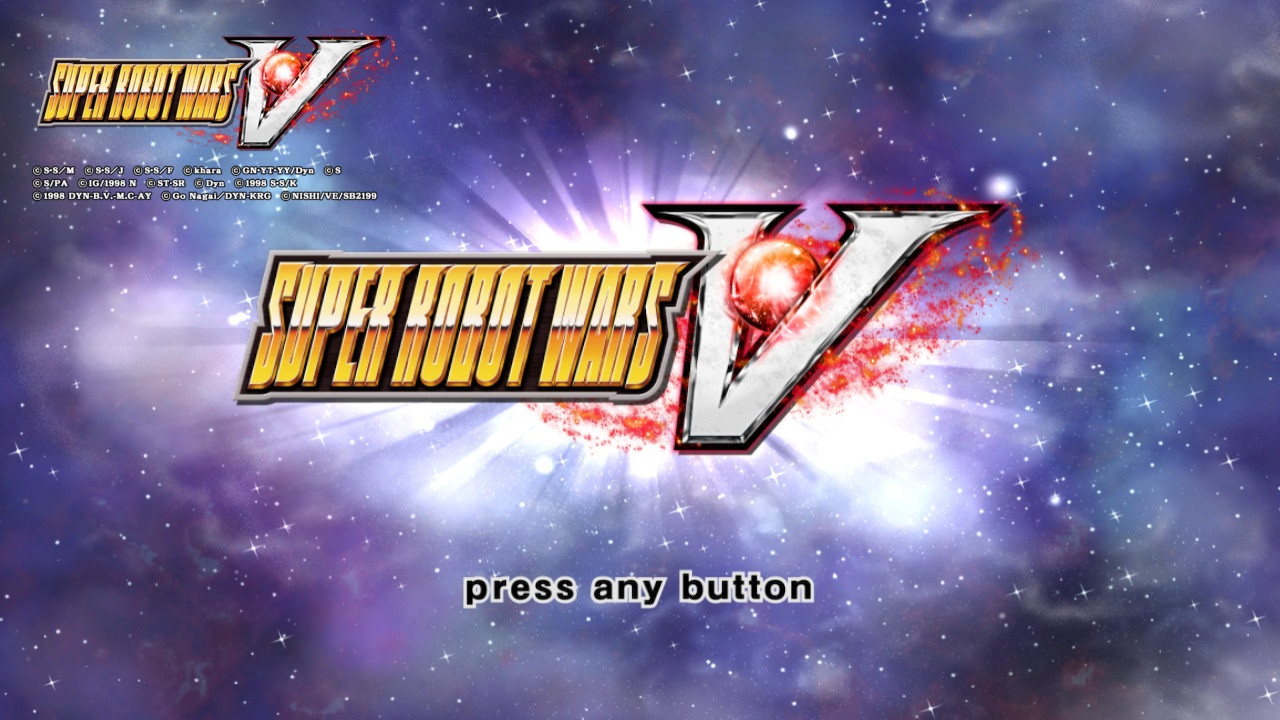[Import Review] Super Robot Wars V – Nintendo Switch
Super Robot Wars V
Nintendo Switch
Developed By: B.B. Studio
Published By: Bandai-Namco Entertainment
Category: Turn-Based Strategy
Release Date: 10.03.19
Composers: Salamander Factory
You know what the best thing about the Switch not being region-locked is? Being able to play games not released in the North American region. So many games I would love to try out never make it to US shores, and it makes me sad. But now we get a chance to try them out, whether by creating eShop accounts for different regions or importing physical copies. Of course, there’s still the language barrier, so I still can’t play any games without an English option. Luckily, many developers are starting to include English options for games released in the Asia region. Well, technically I don’t know how widespread a phenomenon this is, I just know that the last three games in the Super Robot Wars series – X, V, and T – all have English language options on their Asia releases.
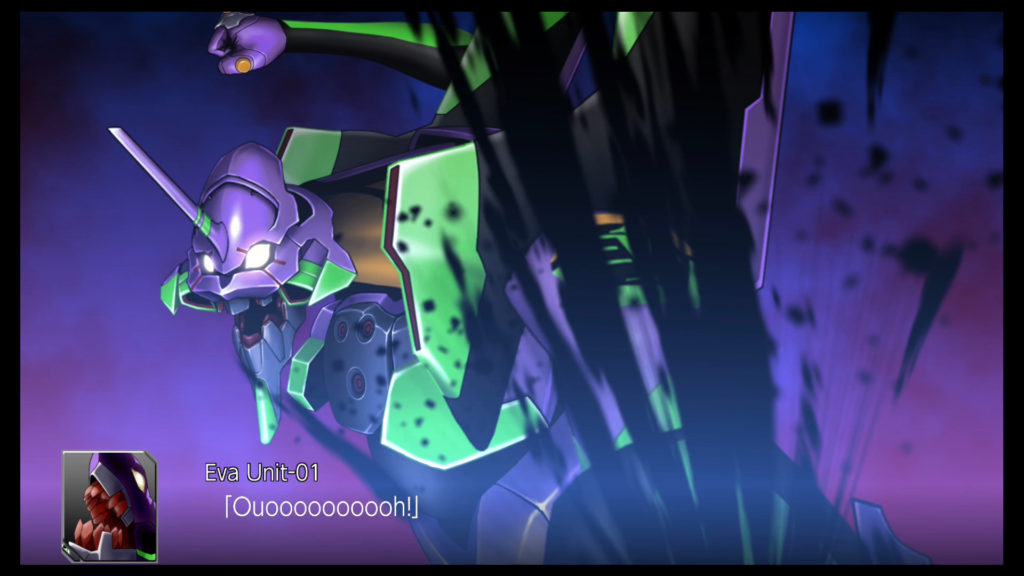
Super Robot Wars
The Super Robot Wars series hasn’t had much luck in the North American market. Entries in the main series have never made it to the states officially, mostly due to rights issues from what I can ascertain. The series takes characters and mechs from dozens of anime and mashes them all together in one glorious turn-based strategic experience. Working out all the rights for whomever holds those series’ rights is purported to be more trouble than it would be worth to bring the game over. There may also be issues surrounding the game’s soundtrack. Who holds the rights to the music from each respective anime is also reportedly a stumbling block for the series internationally.
A few games using original mechs and characters did get translated for the Game Boy Advance and DS. They weren’t very successful, apparently, but I absolutely loved them. It was after falling in love with SRWOG and OG2 that I began researching the series online, discovering its already long history of games I’d probably never get to actually play without figuring out ROMs and emulators. And so I chalked it up as an awesome series where I’d have to be grateful I even got to play the games I did. Enter the Switch, and the miracle of region-free consoles. OK, technically the PS4 releases of these games aren’t region-locked either, but this is a Switch-focused site, so that’s who we praise. The point is, I’m finally able to get my hands on new SRW releases and actually play them in a language I understand without any of the dubious moral (and potentially legal) complications of ROMs. It’s a day I never thought I’d see.
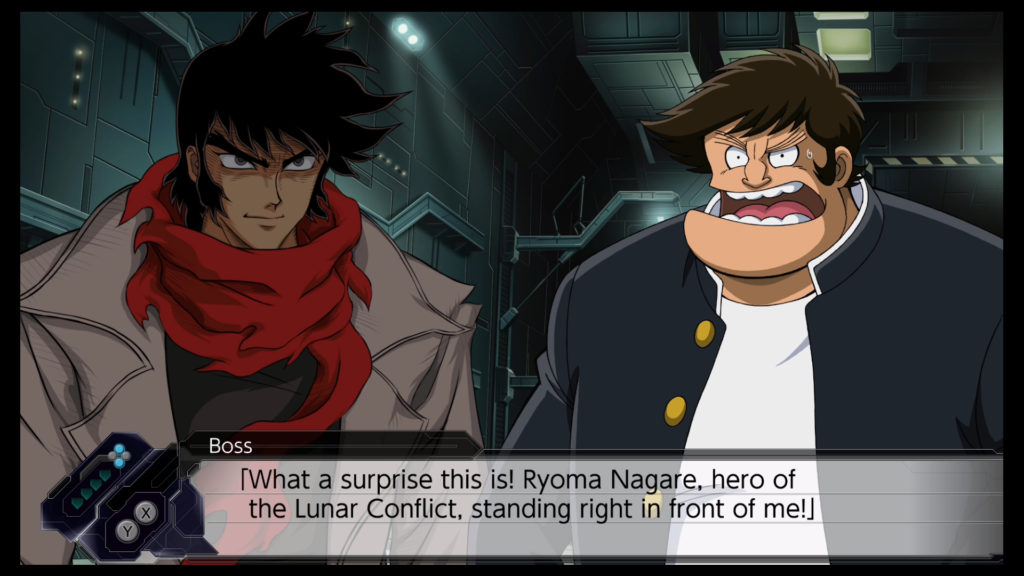
Everything About This Plot Is Anime As Hell
Everyone who follows anime already knows that anime plots can be pretty convoluted, but that’s also part of their charm. Super Robot Wars turns that up to eleven by trying to find a way to jam the plots of every single series it features into one semi-cohesive plotline. In the case of Super Robot Wars V, that means trying to tie together eighteen different series into one story. It’s like a crossover fanfiction gone horribly wrong, yet so terribly right at the same time, told in a visual novel format broken up by turn-based strategy levels.
Players can choose their protagonist, either the aloof veteran pilot Soji Murakumo or the highly energetic rookie lab assistant Chitose Kisaragi. They come into possession of a prototype mech called the Vangray, after which they’re thrown aboard the Yamato from Space Battleship Yamato and join its quest to retrieve a device from Iscandar, a planet on the other side of the galaxy, which is the earth’s only hope for survival. From there, uh… geez, I don’t even know how to describe the plot after that. There are alien invaders, different political factions vying for power across multiple alternate universes, and every protagonist/antagonist rivalry from each of the game’s contributing series plays out in full. It’s a whole lot to process, and it’s absolutely wonderful. It’s like watching eighteen different mecha anime all at the exact same time.
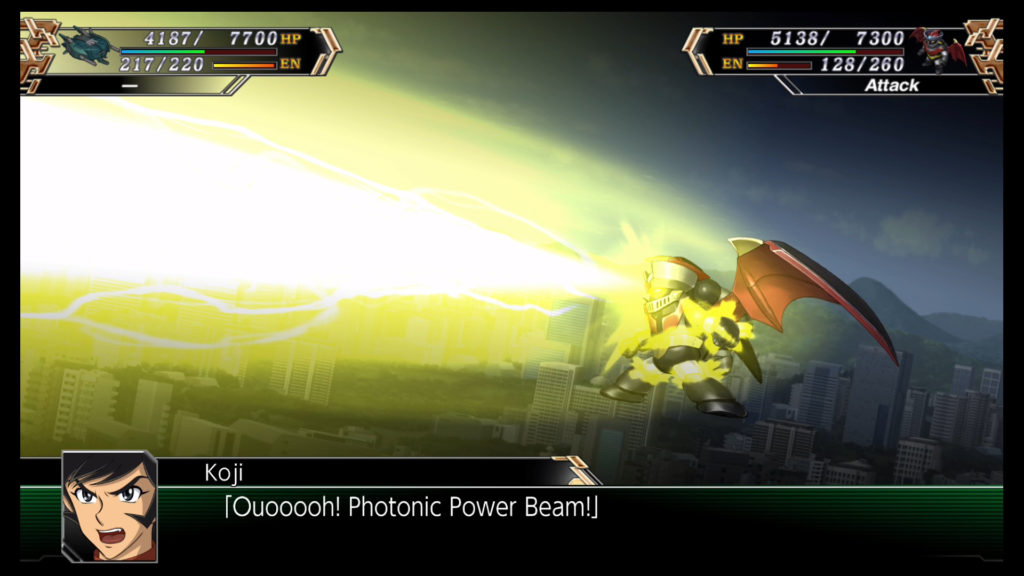
Featured Anime Series
Super Robot Wars V features mecha and storylines from each of the following series:
Super Machine Zambot 3
The Unchallengeable Daitarn 3
Mobile Suit Zeta Gundam
Mobile Suit Gundam ZZ
Mobile Suit Gundam: Char’s Counterattack
Mobile Suit Gundam: Hathaway’s Flash (mecha only)
Mobile Suit Crossbone Gundam
Mobile Suit Crossbone Gundam: Skull Heart
Mobile Suit Crossbone Gundam: The Steel 7 (mecha only)
Mobile Suit Gundam SEED Destiny
Mobile Suit Gundam 00 the Movie: A Wakening of the Trailblazer
Mobile Suit Gundam Unicorn
The Brave Express Might Gaine
Martian Successor Nadesico: The Motion Picture – Prince of Darkness
Getter Robo Armageddon
True Mazinger Edition Z: The Impact!
True Mazinger ZERO
True Mazinger ZERO vs. Great General of Darkness
Full Metal Panic!
Full Metal Panic? Fumoffu
Full Metal Panic! The Second Raid
Full Metal Panic! (Light Novels)
Rebuild of Evangelion
Evangelion: 1.0 You Are (Not) Alone
Evangelion: 2.0 You Can (Not) Advance
Evangelion: 3.0 You Can (Not) Redo (mecha only)
Star Blazers: Space Battleship Yamato 2199
Cross Ange: Rondo of Angel and Dragon
I’m a particularly huge fan of Gundam, so it’s nice to see it so well-represented – though from what I understand that’s pretty much always the case. It also includes some series I’ve never watched, so it was cool to see all the characters and plotlines I was familiar with weave their way through the new characters and their stories. Which characters got along? Which ones hated each other? I mean it’s all fanboy stuff, but dammit if I didn’t love every second of it.
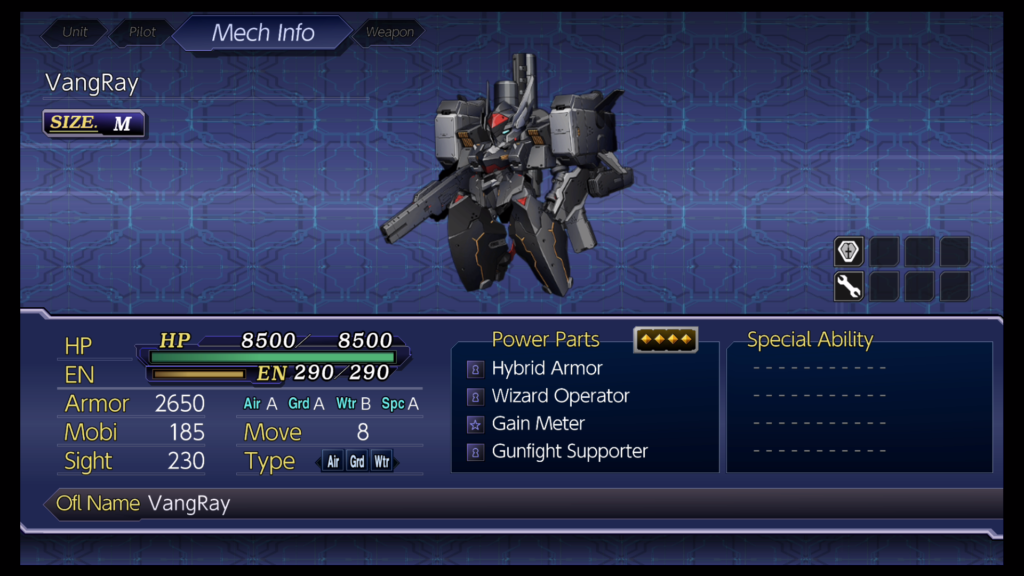
Field Your Mecha Dream Team
Through the game’s first few stages, you’ll just be using whatever mecha have been introduced. But as the game moves along and dozens of characters, mecha, and ships join your cause, you’ll be forced to choose what team you’re going to deploy. Sometimes the game will force certain characters into the lineup for story reasons, but for the most part once you really get into the game you can pick your favorites. But building a team can be kind of hard, emotionally; some pilots just have skills that are too valuable to leave on the sidelines, even if your heart is with a different mech. I mean, I grew to love Maito and Might Gaine along the way, but at first I only kept him in the lineup because his President ability got me extra tactical points (more on that later). In my heart I wanted to put another Gundam character or maybe one of my favorites from Full Metal Panic! in his place. It was a tough call to make.
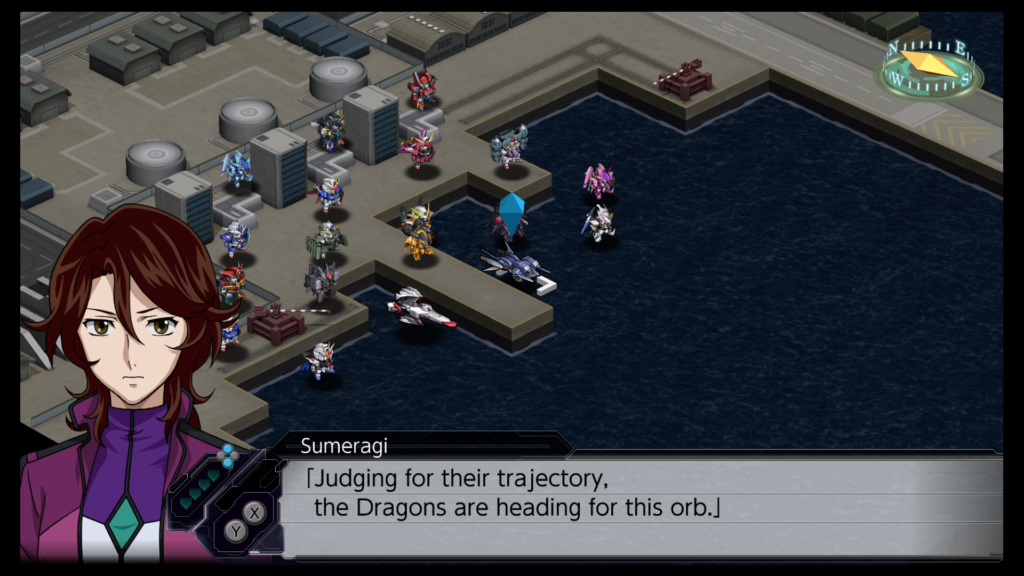
The Commander’s Seat
The bulk of the gameplay proceeds like a lot of turn-based strategy games. Your units and those of your enemy take position on a gridded battlefield, and you must maneuver your units into position to attack or defend certain enemy units or friendly positions, depending on the mission objectives. Most of the time the objective is to just kill everything, but sometimes a mission will also call on you to defend a certain ally or not let an enemy escape by getting to a particular location. Each of your units has a variety of attacks taken right from their respective anime series. Gundams, for instance, have their full array of armament from beam sabers and rifles to missile launchers to funnels. More superheroic robots, like Mazinger or Might Gaine, have their signature finishing moves as well.

When The Fighting Starts
Attacking consists of choosing your attack and a target. Different attacks have different ranges, attack strength, and costs. Attacks can either cost ammo or energy. Ammo is unique to each weapon, and once it runs out you can’t use that weapon anymore without resupplying. You can resupply by equipping a mecha with a resupply unit or by landing in a friendly ship for a turn. Energy is also finite, but is shared between all weapons that use energy. Energy regenerates a little with every turn, but certain special abilities will regenerate energy much faster, and it can also be refilled by landing on a friendly ship.
Whenever you attack or are attacked, both you and the enemy unit will get a chance to attack. If you’re the defender, you can choose to defend and reduce damage or evade to reduce your enemy’s accuracy instead. Generally, the unit who initiated the attack will make their move first. Certain abilities will let a character counterattack first, however. It’s always a good feeling when an enemy attacks you, but you use an ultra-powerful attack to one-shot them before they get a chance to do any damage. Luckily only a few bosses have this ability, so the game doesn’t make you taste your own bitter medicine too often.
Most importantly, whenever an attack is initiated, it is accompanied by special animations showing the battle. It was really cool to see my favorite mecha pull off their signature attacks in the SRW style. Uh, at first, anyway. Unfortunately, seeing the same animations over and over gets a little old after a while. Luckily, you can either fast-forward the attacks so they take less times or turn off attack animations altogether if you prefer. The farther I got into the game and the fewer new units that showed up, the more I left the animations off. But every once in a while, I just wanted to see Setsuna activate the TRANS-AM and go nuts on some bastard.
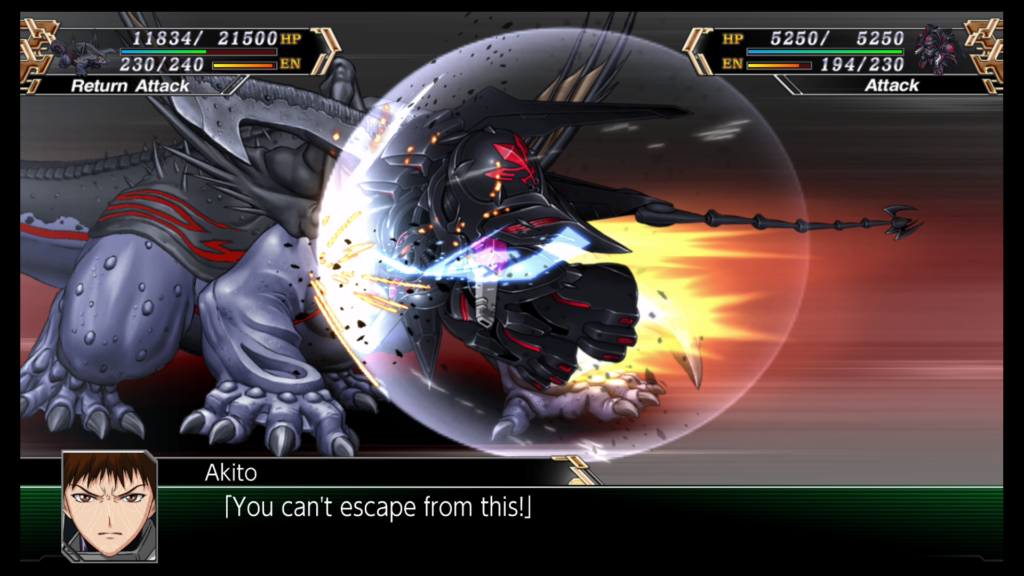
Some Tricks Up Your Sleeve
You can also activate special abilities for your units, which are divided into two types. Spirit abilities use a pilot’s SP to activate, and have a large range of effects from raising hit or evade percentage, to adding extra experience points or money for shooting down an opponent. Every character will unlock up to six spirit abilities as they level up, and while everyone draws from the same pool of spirit abilities, the combination of abilities is unique for each character. There are also ExActions, which ExPoints. ExPoints are generated whenever one of your units shoots down an opponent. There are only five ExActions which are the same for all characters, but they tend to be more useful than spirit abilities, especially early on. You can increase damage, move extra spaces, and even get an extra action in a turn with ExActions well before those abilities show up as spirit abilities.
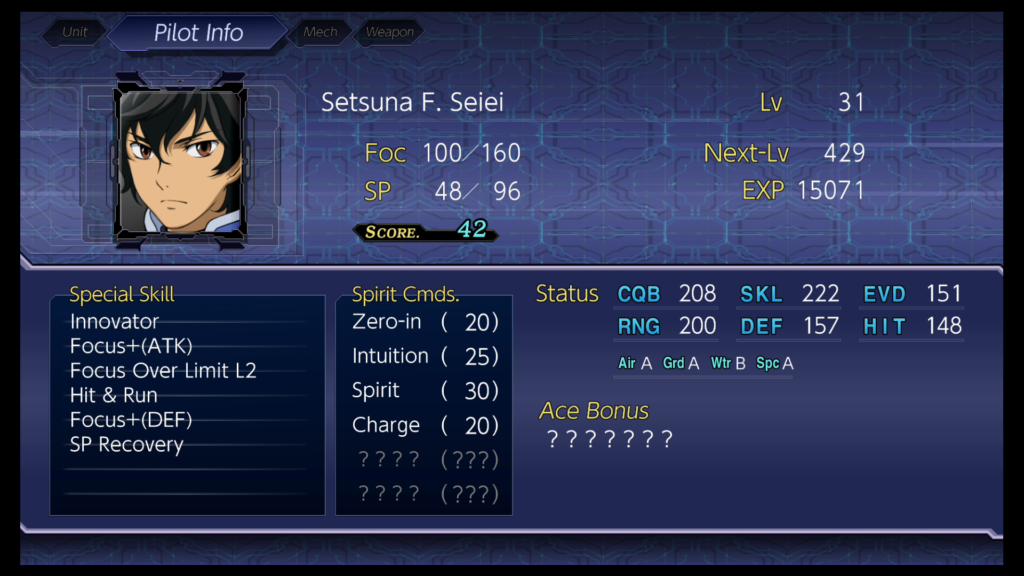
Building Character
Fighting enemies rewards units with three resources; experience points, tactical points, and money. You can also, eventually, use the sub order menu between missions to generate more of these resources. Experience is awarded for every attack, although it is greatly increased for a kill shot, but money and tactical points are only awarded when an enemy is destroyed. Characters level up every 500 experience points they receive, and like in every RPG ever, leveling up brings about stat bonuses and, if you’re really lucky, new abilities or attributes. Attributes are passive abilities that bestow bonuses like extra damage or accuracy once you accumulate a certain level of damage, the ability to move after making an attack, or the ability to make your counterattack before an enemy launches their attack.
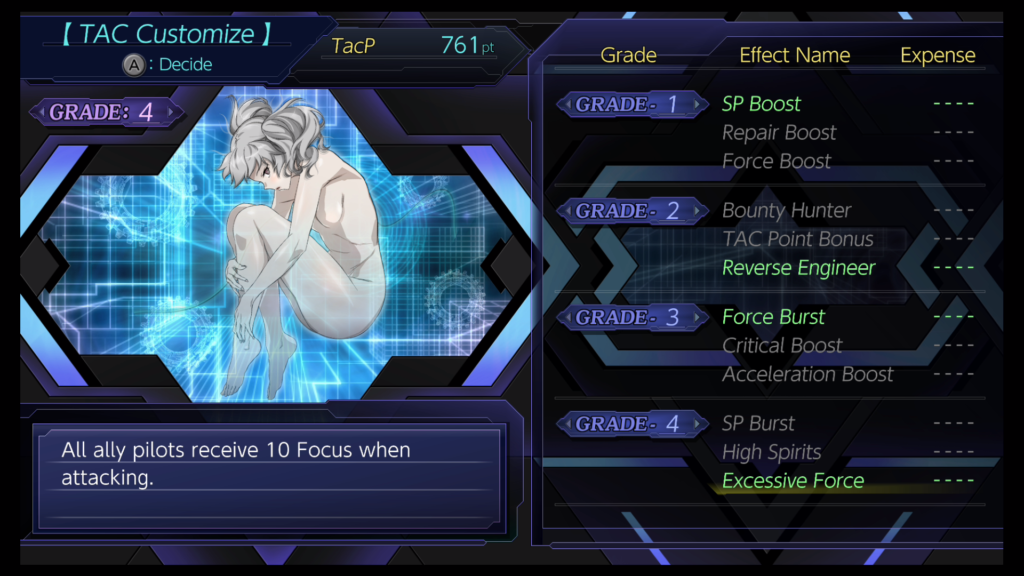
Economic Decisions
Between missions, you can use your acquired money and tactical points to purchase upgrades for your units. Money is used to directly strengthen elements of your mechs, like HP, energy, accuracy, armor, mobility, or weapon strength. Tactical points, or TacP, have a slightly wider variety of uses. For one, you can purchase optional parts that can be quipped on your mecha that have various benefits. You can also purchase tactical programs which can raise your pilots’ stats or grant them new attributes. Finally, you can purchase TAC customizations, which apply bonuses to your whole army.
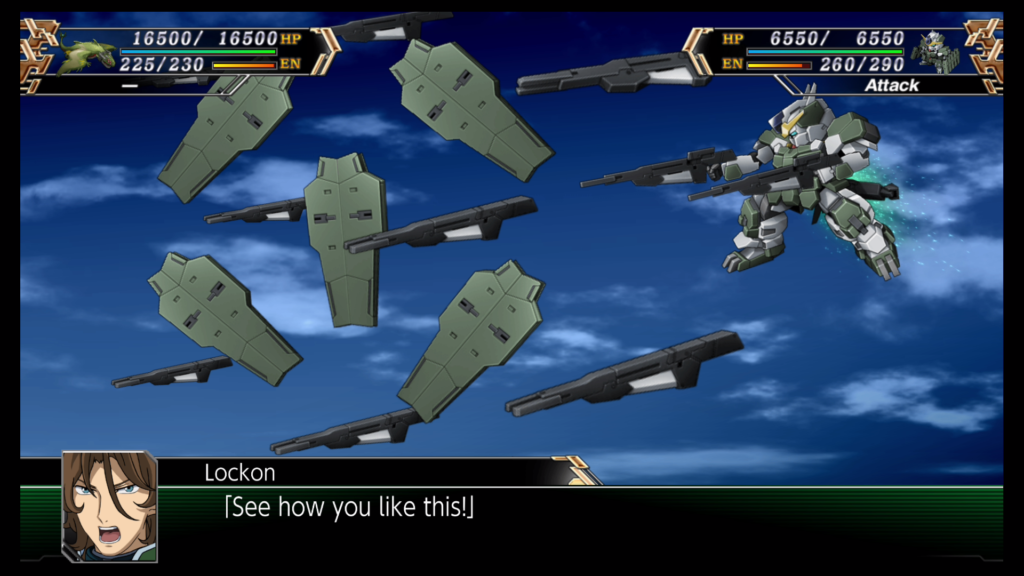
Bonuses Everywhere You Look
As if the basic gameplay wasn’t loaded enough, Super Robot Wars V throws in bonus rewards like it’s going out of style. Medallions are awarded for hitting certain milestones in the game, and they provide powerful optional parts as rewards. Clearing certain levels opens up bonus missions, which shower you with money, TacP, and optional parts when you complete them. The game also tracks all of your units’ kills, and when you hit 60 kills that unit becomes an ace, and a great ace at 80. Each of those levels comes with a unique bonus ability for that pilot. Mecha can have each of their attributes upgraded ten times; when all of the levels of those upgrades are at level five, it unlocks a unique customization bonus. When you hit upgrade level ten for every attribute, that mech’s full customization bonus unlocks. By the end of the game, if you focused on building up a core team of characters, you can get so stupid powerful the game can feel almost broken. It’s a wonderful feeling.
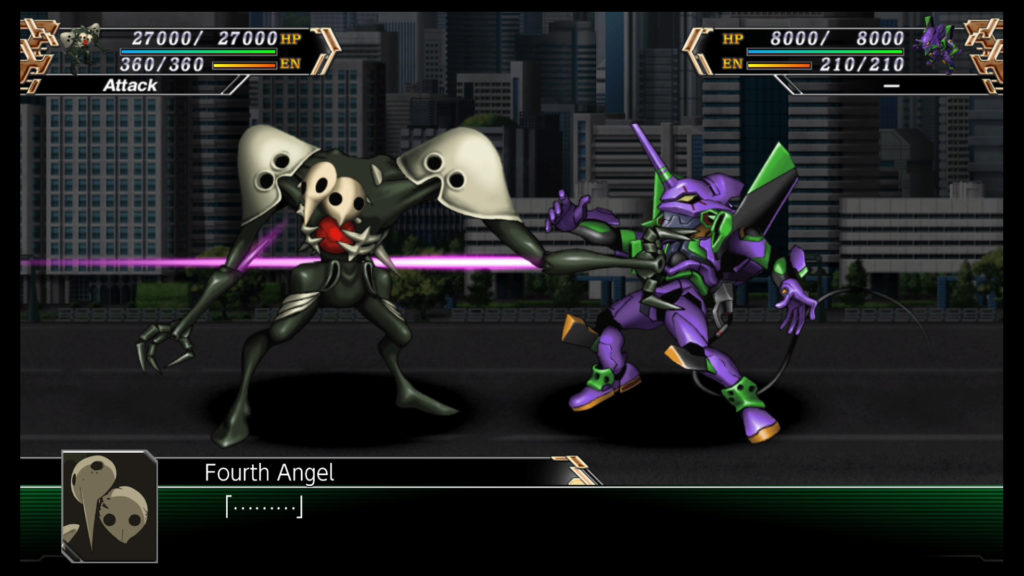
Superior Spritework, Supreme Soundtrack
Visually, SRWV has plenty to please fans of every series represented. Character portraits during the visual novel cutscenes are anime-accurate for every character, but they still look like they all fit together on the screen. The battlefield graphics aren’t amazing; the background settings are easily the least-impressive looking part of the game. The character sprites are small and not especially detailed, but they still look fine. Once an attack starts, however, things look amazing. The backgrounds and character sprites get a lot more detailed, and the animations are smooth and, in the case of special finishing moves, faithful to the source material.
The soundtrack is likewise fantastic. The game’s original songs are limited to the visual novel intermission scenes and the protagonist’s attacks, but they’re well-composed and present the appropriate energy. More fun for fans of any of the game’s contributing series, however, is the fact that whenever a unit attacks, the game begins playing a modified, midi-fied version of a song from their anime. Most of the time it’s the theme song, but not always. While most songs make the transition gracefully and still sound awesome, some feel flat. For instance, the Gundam SEED theme sounds a little dull compared to its original version. Overall, however, the game sounds fantastic.
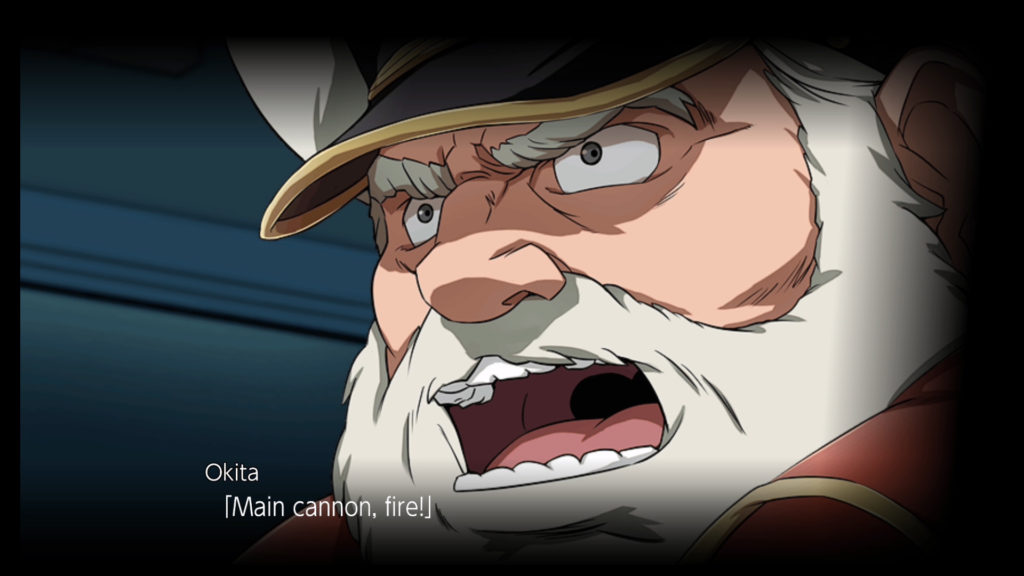
Super Duper Robot Wars
The Super Robot Wars series is a mecha anime fan’s dream come true, and I am adamantly a mecha anime fan. I don’t care how confusing the story is, or how uneven the translation is, or how OP certain characters can get, or how shallow the game’s strategic elements can become as a result – although all of those things are true. Super Robot Wars is a celebration of all things mecha, and if you come ready to join the party rather than think too hard, it will give you everything you want and more.





Super Robot Wars V
Physical – $62.99


